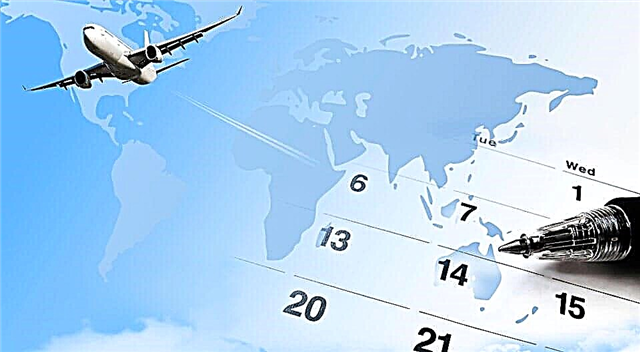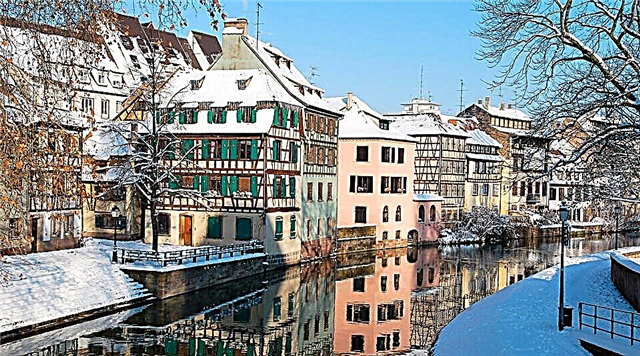Neskuchny Garden in Moscow is a favorite resting place for citizens and guests of the capital. The garden and park complex, together with ancient architectural structures and modern attractions, provides diverse opportunities for a pleasant pastime. The landscaped space occupies an area of 59 hectares along the right bank of the Moskva River and is a kind of continuation of the TsPKiO im. M. Gorky.
History

Neskuchny Garden acquired its modern look in the middle of the 19th century, when the Palace Department acquired three neighboring estates for Emperor Nicholas I:
- Orlova (former Demidov)
- Golitsyn
- Trubetskoy-Shakhovsky
In 1756, the famous Ural industrialist P.A. Demidov ordered to lay out a garden on the banks of the Moscow River. The sloping slope was transformed into an amphitheater, on the terraces of which over 2 thousand varieties of rare crops were planted. Greenhouses and hotbeds were built for exotic plants. A large pond was dug at one of the sites. All kinds of waterfowl were bred in it. There was a poultry house nearby.
The Demidov Garden quickly gained fame. People of any class were allowed to view its wonders free of charge. After Demidov's death, Count A.G. Orlov-Chesmensky. By his order, various sculptural compositions and small architectural forms (pavilions, gazebos, etc.) appear on the territory.
The neighboring estate belonged to Prince N. Yu. Trubetskoy, who also loved entertainment and ventures. The "highlight" of the park area was the "green" labyrinth. The garden housed greenhouses for outlandish plants, pavilions original in shape. The Golitsyn estate at the end of the 18th century. passed by inheritance to Natalya Petrovna Chernysheva. The new owner flatly refused to sell the estate during her lifetime. According to her will, only after 5 years from the date of death, the heirs could dispose of the land. In 1843, the Golitsyn inheritance was bought by the Palace Order.

Thus, the imperial family became the owner of a vast territory within Moscow. She was chosen for the arrangement of the royal residence. The work was supervised by the architect Evgraf Tyurin and the gardener Pelzel. A palace was built for the summer holidays of Empress Alexandra Feodorovna. In her honor, he received the name of Alexandria.
In the middle of the 19th century. the landscape gardening has undergone significant changes. The pond was filled up, the coastal terraces were smoothed, many buildings were dismantled. In the absence of the owners, the garden became accessible to the public. It gradually grew and ran wild. The situation improved after the move to the Alexandria Palace of the Grand Duke S.A. Romanov, who was appointed Governor-General of Moscow. He ordered to stop free visiting the garden and carry out work to restore it. The architectural and construction activities were entrusted to V.A.Gamburtsev.
Since 1918, Neskuchny Garden again received the status of a public one. The palace building houses a collection of furniture from the 17th-19th centuries. Since 1928, the territory has been included in the Central Park of Culture and Leisure. Gorky. In 2009, the garden and park complex was given the status of a specially protected area.
Why is the garden called Neskuchny

The garden owes its name to the estate "Neskuchnoye", which belonged to Prince N.Yu. Trubetskoy. The princely family back in the middle of the 18th century. received land from the Kaluga outpost to the Moscow River. The territory was occupied by a hill and a deep ravine. The architect D. Ukhtomsky was invited to properly equip the difficult terrain. He designed the baroque palace, which he called "The Boring Country House".
The two-story building was decorated with:
- on the ground floor - colonnade
- on the second floor - balcony
- under the roof - sculptures
The adjacent park was organized in Versailles style. Shrubbery grew along the paths, trimmed in various geometric shapes. The landscape was complemented by numerous sculptures and gazebos. After the death of the first owner, Neskuchnoye passed from hand to hand, and was bought out by order of Emperor Nicholas I in 1826. As a result, the entire territory of the imperial residence was renamed Neskuchny Sad.
This nickname was confirmed by a variety of fun and entertainment, which were arranged for the amusement of visitors. In the middle of the 19th century. the "air" (summer) theater was opened. Illusionists, bear trainers, gypsy ensembles, and theatrical soloists performed on its stage.
Sights

The boring garden still lives up to its name. On an area of 60 hectares, historical sights of the 17th-20th centuries have been preserved:
- Alexandrinsky palace
- Fountain "Seasons"
- Arena
- stone bridges - Upper, Lower, Grotesque
- Tea (Summer) House
- Bathing (Bath) pavilion
- Hunting Lodge (Stone Gazebo, Samovar)
- Rotunda
- Delsal's grotto
- sculptural composition "Girls-Divers"
The Alexandrinsky Palace (architect E. Tyurin) changed its purpose several times. It was built as a summer vacation spot for Empress Alexandra Feodorovna. Later, the Moscow governor-general lived in it. In the 20th century. the building was turned into a museum: originally furniture, and then ethnology. In the 30s. of the last century, the Presidium of the Russian Academy of Sciences is based in the palace.
On the sides of the main building there are 2 wings:
- Frailinsky
- Kavalsky
The ascent to the main staircase is decorated with stone bulldogs. The entrance gates on both sides are decorated with pylons with allegorical figures "Abundance". Since 1934, the central part of the ceremonial courtyard has been occupied by the Four Seasons fountain. It was made according to the sketches of the sculptor I. Vitali and previously stood on Lubyanskaya Square in Moscow.

Count Orlov was a passionate horseman and horse breeder. Therefore, he ordered to build a riding arena on the estate. Now the Museum of Mineralogy named after AE Fersman operates in it. The stables were connected to the house through the Bolshoi Kamenny (Upper) bridge. In addition to him, the estate has preserved Small Stone (Lower), passing over the ravine and a small Grotesque bridge.
The Bathing Pavilion was built on the banks of the Elizavetinsky (Ekaterininsky) pond for water procedures. It contained marble baths. According to legend, the bottom of the reservoir for bathing dignitaries was paved with marble slabs. At the slope of the Andreevsky ravine is the Hunting Pavilion. It hosts the shooting of the popular TV program “What? Where? When?". The balcony of the Tea House offers a panoramic view of the central part of the capital. In the 50s. 19th century a grotto of the same name was built according to the project of the architect P. D. Delsal.

On the river bank in the 30s. 20th century the sculptural group "Girls-Divers" was installed (author - R. Iodko). For the 800th anniversary of the capital, a Rotunda with bas-reliefs depicting scenes of Russian history and fountains (by D. Chechulin) was built in Neskuchny Garden. Next to them in 2007, the "Alley of Love" was laid. Its adornment is a symbolic clock, whose hand is set at 5 minutes to six.
Entertainment

Neskuchny Garden has all the conditions for a varied recreation. There is a free library in the pillared building by the Moskva River. The chess pavilion hosts tournaments for board game amateurs. Anyone can play table tennis or tennis. For this purpose, courts and tables are located in the park area.
The children's equestrian school offers its services. The park offers sports equipment rental (bicycles, longboards, roller skates). Extreme climbers enjoy climbing the Panda Park rope. In winter, ice-swimming enthusiasts swim in the ice-holes near the river bank. Bicycle and jogging tracks with chill-out zones and dance floors, as well as several playgrounds have been created in Neskuchny Garden.
There is a children's club "Shardam", the program of which:
- creative workshops
- plant care workshop
- sports activities
- drum school
- quests
An interactive mini-zoo awaits visitors on the central alley.
How to get there

The main entrance is located along Leninsky Prospekt (16-20). The garden can be easily reached by metro:
- along the Kaluzhsko-Rizhskaya line - st. "Oktyabrskaya", "Leninsky Prospect"
- along the Sokolnicheskaya line - Art. "Frunzenskaya" and further along the Pushkin bridge
In addition, there is a motor ship pier, where pleasure boats arrive during the warm season.











